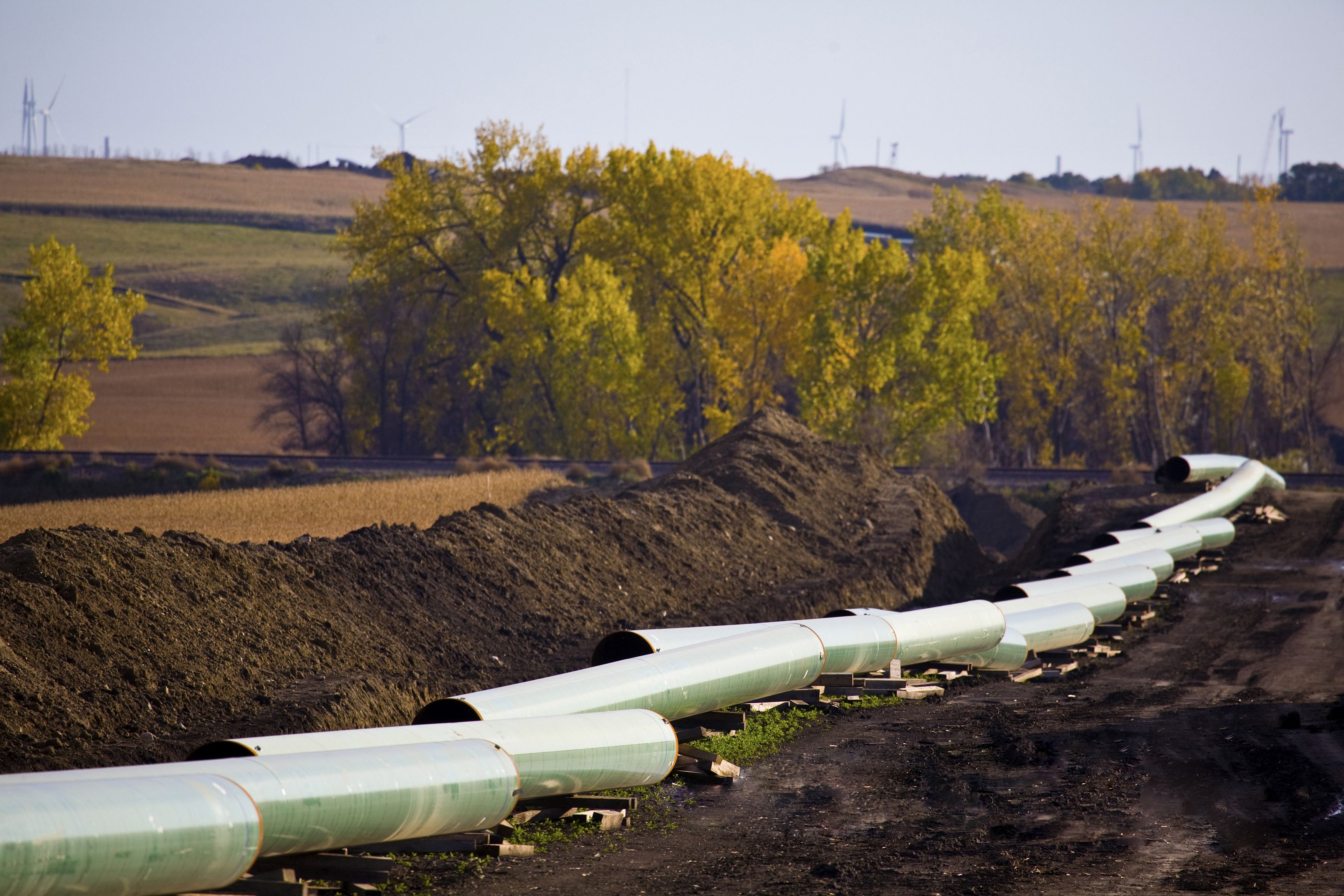By Jack Christensen
Staff Writer
Last January, the United States House of Representatives passed a bill approving construction of the Keystone XL Pipeline. The objective of the pipeline, intended to span 1,179 miles between Nebraska and the Canadian province of Alberta, is to transport crude oil extracted from Alberta’s tar sands reserves to US Gulf coast refineries. Last week, the Senate approved the measure, and with President Obama threatening a veto, the Keystone XL Pipeline is poised to mark yet another divide between the President and Congress.
Before considering the political ramifications of the pipeline, it is worthwhile to stop and consider the tar sands themselves. Tar sands, also known as oil sands, are deposits of porous, sedimentary rock (rocks composed of sand grains) saturated with a thick, tarlike petroleum called bitumen. Like the liquid petroleums conventionally extracted for commercial use, bitumen is composed of organic material that has been buried and compressed over millions of years in the absence of oxygen. It is believed that tar sands are petroleum deposits in which compression is incomplete, and that bitumen, in turn, is an immature form of crude oil.
The majority of the world’s tar sands are found in Canada, primarily in Alberta. The Alberta Energy Resources Conservation Board estimates that Canada’s tar sands represent 173 billion barrels of recoverable crude oil, ranking Canada second after Saudi Arabia in terms of oil reserves. Until relatively recently, the resource-intensive process of extracting the thick, tarry bitumen from rock had made mining Canada’s tar sands prohibitively expensive. But rising global oil prices and technological advances have resulted in tar sands becoming an economically viable fuel source.
However, the process of mining and refining bitumen into a usable fuel makes tar sands environmentally problematic. Since bitumen normally exists in a semi-solid state (commonly likened to cold molasses), it cannot be extracted through conventional wells. Instead, rocks containing bitumen are often accessed via strip mining, with subsequent pulverization and processing of the rock. According to a 2008 RAND Corporation report, 60 percent of Canada’s tar sands are exploited via strip mining. Bitumen can also be extracted using in-situ methods—namely, the pumping of large amounts of steam underground to liquefy the bitumen. Notwithstanding the significant disturbances of landscapes and ecosystems inherent in strip mining, and the copious amounts of water required for on site steam pumping (in a region of Canada that receives less than 20 inches of precipitation annually), both extraction methods are highly energy-intensive.
Furthermore, once the bitumen is transported via the Keystone Pipeline to American refineries (with the addition of hydrogen to make it fluid), it must be broken down into marketable fuel. The process of breaking down the complex chemical compounds of the semi-solid bitumen into liquid fuel is additionally energy-intensive. According to the US Council of Foreign Relations Center for Geoeconomic Studies, processing and refining one barrel of tar sands crude produces nearly three times more carbon dioxide emissions than one barrel of conventional crude. Due to the disruption of peat bog ecosystems in Alberta, tar sands mining is also a significant emitter of methane, a greenhouse gas that is 29 times more efficient at trapping heat in the atmosphere than CO2.
On its website, Statoil, a multinational energy company responsible for developing Canada’s tar sands, touts bitumen as a means of providing energy security to North America. But James Hansen, a leading NASA climatologist, takes a more stark view, writing in a 2012 New York Times article on tar sands and climate change, “If Canada proceeds, and we do nothing, it will be game over for the climate.”



